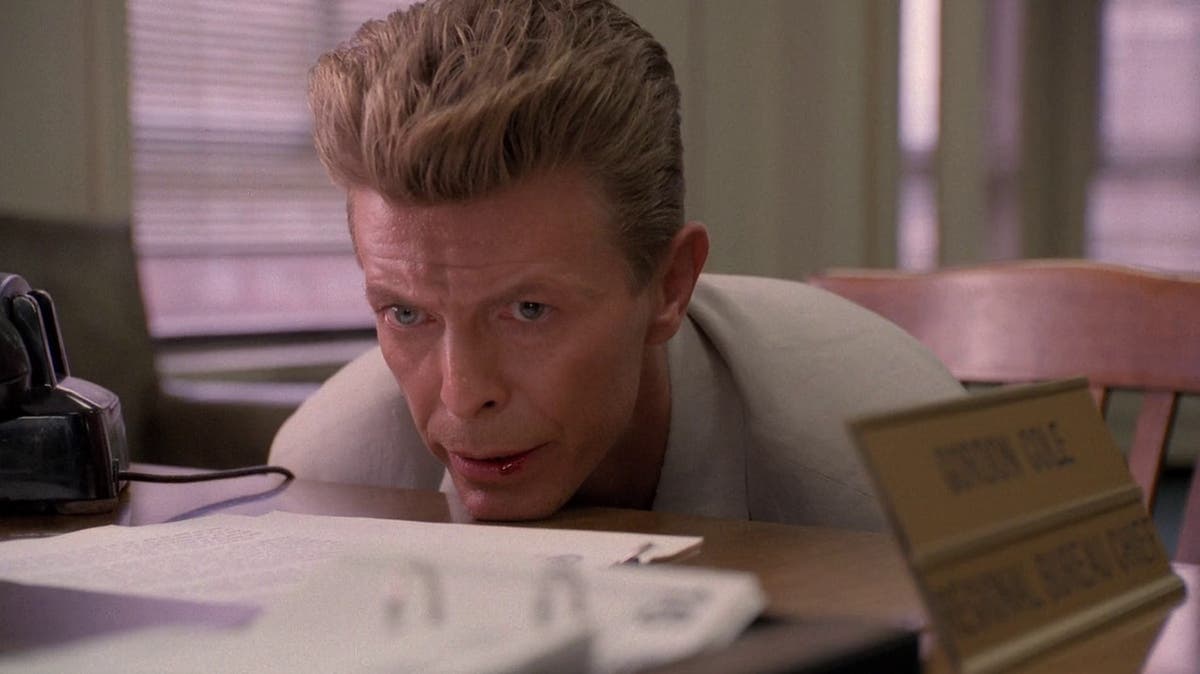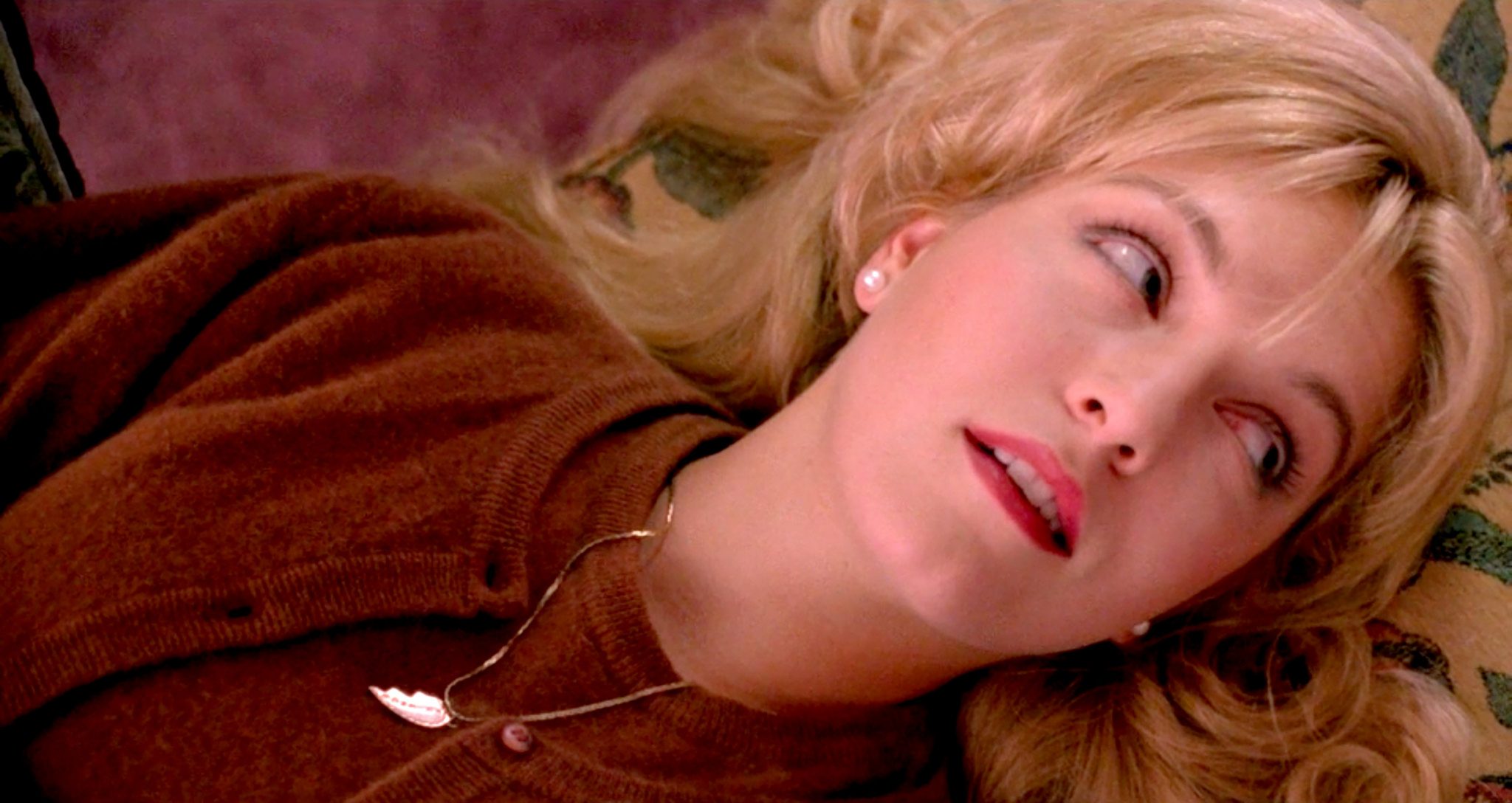‘By the time the film actually makes it to Twin Peaks itself, we find ourselves wishing that somebody would burn the whole place down’
It has been thirty years this month since Twin Peaks: Fire Walk With Me (1992) was first released, but Laura Palmer keeps hanging around – it’s almost like they didn’t bury her deep enough. Panned when it first screened at Cannes, David Lynch’s spinoff movie for his sometimes sunny, sometimes spooky, often funny procedural soap opera Twin Peaks is now correctly recognised by many critics as being not only a precursor to the director’s latest, maybe greatest work, Twin Peaks: The Return (2017), but as a masterpiece in its own right. Those who hated it back then and those who love it now invariably do so for exactly the same reason: stripped of the involvement of the original show’s co-creator Mark Frost, the universe it presented was less quirky, more unnerving, and a deliberately alienating mirror for Twin Peaks (the town) that made it more obvious than ever that, above all else, this was a story about a young woman being serially raped, then killed, by her father. In fact, we do not catch sight of Twin Peaks until minute thirty-three: prior to this, we are in a strange town, policed by strange and uncooperative law enforcement officers, and populated by strange, threatening people. It is one year before Laura Palmer’s murder, and two new FBI agents, Chester Desmond (Chris Isaaks) and Sam Stanley (Kiefer Sutherland), are investigating the suspicious death of one Theresa Banks. Nobody smiles; nobody admires the agents for their derring-do or ingenuity; every conversation has a hint of malice. The film’s opening shot, of an exploding television, is a bratty, snotty joke about the director’s rejection of the medium in the wake of his bad experiences with ABC on the production of Twin Peaks itself – it is also, arguably, one about the way the film repudiates Twin Peaks’s positioning of Laura Palmer as a classic true crime victim, forcing viewers to reckon with the living hell of her actual life as a drug-addicted victim of incestuous abuse. By the time Fire Walk with Me actually makes it to Twin Peaks itself, we find ourselves wishing that somebody would burn the whole place down.

What makes Fire Walk With Me a triumph is a strange, intelligent central performance by the actress Sheryl Lee, who was cast to embody the murdered prom queen Laura Palmer in a high-school photograph, dead and wrapped in plastic, and in a brief, fleeting clip from a home video. Nevertheless, Lee impressed Lynch enough that he decided Laura deserved a distinct origin story. What makes Lee memorable is the way her choices vis-à-vis tone and delivery are so rarely obvious, sometimes tipping over into faintly surreal or illogical: Laura’s highs are the artificial and nearly manic highs of a soap opera, and her lows are the guttural, animal lows of real-life grief and trauma. Often, we see her experience wild mood swings over the course of a few seconds; she laughs during moments of great peril, and when she is threatened she has an unusual tendency to bare her teeth, as if she herself is the black dog that runs at night. “Do you think that if you were falling in space,” her friend Donna asks her, the pair of them sprawled out on two armchairs after school, “that you would slow down after a while, or go faster and faster?” Lee – whose reply, as is often the case with Lynch’s dialogue, is so gnomic and theatrical that it ought to be impossible to fill it with emotion – goes unusually still, letting Laura appear to be paradoxically, frighteningly calm. “Faster and faster,” she says softly, her eyes widening into cracked blue saucers. “And for a long time, you wouldn’t feel anything. And then you’d burst into fire, forever. And the angels wouldn’t help you, because they’ve all gone away.”

In one of his very few appearances in Fire Walk with Me, Agent Dale Cooper says that since the murder of Theresa Banks, he has been having premonitions that the killer will strike again. The victim, he says, seemingly acting as an interpreter for information from another place entirely, will be a woman; she’ll be blonde, and a high schooler; she will be sexually active, and on drugs, and she’ll be crying out for help. The very dark joke Lynch is making is that Cooper’s profile, although accurate, is effectively the profile of most girls who are murdered in true crime, a slew of pretty victims who have been dispatched for being bad girls or for tempting bad men. Child and woman, innocent and sophisticate, a nocturnal animal and a schoolgirl, a sex worker and a Meals-on-Wheels volunteer in a modest knee-length kilt – Lynch and Lee both know that Laura Palmer, more than any other character in the movie or the series, has to manifest the conflict between light and darkness that makes Twin Peaks such a memorable embodiment of the American psyche. They know, too, that most young women are a mess of contradictions, and that their being so keeps them from being two-dimensional objects of pity or derision – that is, whenever the fire of fate takes hold and all the angels go away.
